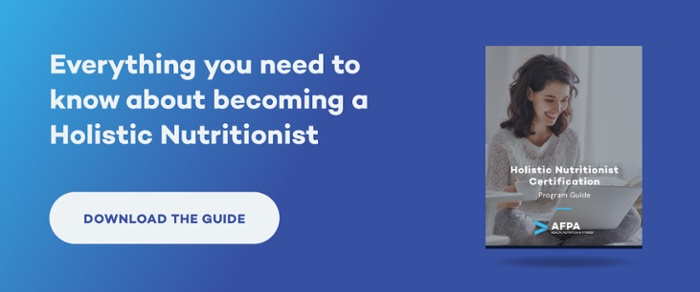Everyone wants to live their healthiest life, but knowing where to start is far from easy. You don’t want to fall into the trap of following a fad diet, but navigating what your body really needs nutritionally isn’t always straightforward either.
Should you pay more attention to the timing of your meals? Is It healthy for you to skip meals? Intermittent fasting is an eating strategy that addresses this crucial angle for your health. Many people have found that it makes a positive difference for their overall health.
There’s a lot to unpack about this timed eating method, so let’s dive into our complete guide to intermittent fasting.
What is Intermittent Fasting?
Intermittent fasting is the term used for a number of eating strategies where you focus on optimizing the timing of when you eat to maximize how your body processes food. The general idea is that you control the amount of time your body spends in a “fed” and “fasted” state, which consequently controls how quickly you burn calories.
Following a series of short-term fasts helps to lower the overall amount of calories you consume in a day while increasing your full fat-burning potential. These fasts can vary considerably, as some people might skip breakfast each day, while others will go 24 hours without food on a regular basis.
A Brief History of Intermittent Fasting
The truth is that intermittent fasting has a long evolutionary history. Our hunter-gatherer ancestors survived in a world of relative food scarcity, meaning that they went through regular feast and famine cycles and their digestive systems grew accustomed to processing big meals at intermittent timeframes.
Historically, intermittent fasting has taken on cultural significance for many of the world’s major religions like Islam, Christianity, and Buddhism. The strategy also gained scientific notoriety in the 1930s when studies showed that lab mice lived longer when they were fed fewer calories each day. More recent research offers evidence that controlling the timing of calorie consumption can reduce your risk of disease and potentially extend your lifespan by years, even decades.
How Does Intermittent Fasting Work?
The key to success with intermittent fasting comes down to controlling the amount of time your body spends in a fed and fasted state.
After a big meal, your system enters a fed state for about three hours where it digests and absorbs all the nutrients you just took in, meaning that calorie burning is put on the backburner. After this period, it enters a fasted state for up to twelve hours where your body is low on glucose so it turns to stored fat for fuel.
Since we rarely go twelve hours without eating in regular life, few people spend much time in this optimized fat-burning state. That’s why intermittent fasting can make such an impressive change for your health without you making other lifestyle changes.
Can you reap the benefits of intermittent fasting by skipping an occasional meal? The process isn’t quite so simple. Instead, you should follow a structured fasting routine, which we’ll explore soon. But first, let’s consider whether fasting makes sense for you in the first place.
What are the Benefits of Intermittent Fasting?
Intermittent fasting likely sounds intriguing, but is it the right eating strategy for you? Below are some facts to consider about this alternate eating approach before you commit.
- It’s less commitment than a traditional diet: Intermittent fasting makes nothing off limits, so you’re less likely to feel deprived. Likewise, you can change the timing of your fasts so that they are optimized for your schedule.
- Your workout results might improve: Contradictory as it seems, exercising with an empty stomach might make your workouts more effective. That’s because you are maximizing your system’s fat-burning potential and likely burning more calories with each move.
- Your eating plans become simpler: You won’t need to buy any special groceries for intermittent fasting, and you’ll have fewer meals to plan each week, which saves you time both cooking and grocery shopping.
- You might have fewer symptoms during cancer treatment: While the research on the benefits of fasting for preventing cancer is still forthcoming, the early results are promising. One study of 10 cancer patients showed that the worst symptoms of chemotherapy could be reduced by fasting beforehand, and another revealed that fasting every other day led to a higher cure rate for cancer patients.
- You can stave off emotional eating: The restrictions of traditional diets cause many people to crave “cheat days” where they indulge in unhealthy favorites. Following an intermittent fasting routine, in contrast, might decrease your amount of emotional eating because you’ll feel less restricted.
- You might lose weight: Though it’s standard advice to eat three meals a day, the truth is that intermittent fasting is a proven strategy for losing weight. A 2014 study revealed that participants who followed a weekly fast experienced a 3% to 8% weight loss after several months and that their waist size shrunk 4-7% in the same timeframe.
- You could have less inflammation: Chronic inflammation is a precursor to many long-term health problems like arthritis and heart disease, but following a fasting routine seems to offer some relief. Research shows that the process initiates your cells to start repairing damage caused by inflammation. Many studies show it can reduce your overall inflammation rate as well.

Get Your Free Guide to Becoming a Holistic Nutritionist
Learn about the important role of holistic nutritionists, what it takes to be successful as one, and how to build a lucrative, impactful career in nutrition.
Six Intermittent Fasting Methods to Try
Are you intrigued enough by intermittent fasting to give it a try? The next step is deciding which fasting method you want to try. Below are six of the most popular options to consider.
1. 16/8 Method (Lean Gains)
As one of the simplest (and most popular) fasting methods, the Lean Gains Method requires you to eat within eight hours each day and fast for the next sixteen. You can adjust the timing to fit your schedule, but most people tend to eat between 1 pm and 8 pm and fast for the remainder of the night and morning.
While the plan is meant to be followed each day, you can adjust the frequency to fit your priorities. If you want to maximize the impacts of your workouts, plan to exercise in the last hours of the fast. This intermittent fasting method is one of the easiest to fit into a normal life because you can eat breakfast and dinner as usual. However, it might not be ideal for athletes, as they might struggle to take in enough calories.
Advantages: Simple to follow, minimal lifestyle changes necessary
Disadvantages: Can be difficult to take in enough calories for athletes, working out while fasting isn’t easy
2. Alternate Day Intermittent Fasting (Up Day Down Day)
If your motive for intermittent fasting is weight loss, the Up Day Down Day method might be ideal. The premise is that you alternate daily between following your regular diet and consuming a fifth of your regular calorie intake. (For example, 2,000 calories one day, 400 the next). You can follow this strategy for as long as necessary until you reach your goal weight.
The main idea is that alternating your daily calorie consumption activates the SIRT1 gene, which some research shows reduces the amount of fat your body puts into long-term storage.
Advantages: Will likely lead to weight loss
Disadvantages: Monitoring your calorie intake can be tedious, some people overeat on their regular days
3. 5:2 Diet
If you don’t want to think about fasting for most of the week, the 5:2 diet lets you eat as usual for five days and cut your diet down to just 500 calories for two non-consecutive days. The convenience of this method has made it one of the most popular options for fasting today. The biggest concern comes from accidentally overeating on non-fast days.
Advantages: Simple instructions, can eat at any time, easy to customize
Disadvantages: Benefits aren’t as pronounced as other fasting methods, easy to overeat on non-fasting days
4. Weekly Intermittent Fasting (Eat-Stop-Eat)
Similar in concept to the 5:2 plan, Eat-Stop-Eat lets you follow a regular diet for five days a week and forgo food entirely for two non-consecutive days, essentially completing two 24-hour fasts. Simple to fit into most schedules, this plan can quickly lead to weight loss. Many people don’t follow Eat-Stop-Eat every week and instead complete it monthly, before traveling, or after the holiday season.
Advantages: Flexible, lets you try fasting without committing to a daily routine, no calorie counting
Disadvantages: Can be difficult to go 24 hours without food, requires self-control
5. Fat Loss Forever
For those looking to gain lean muscle without giving up their cheat days, Fat Loss Forever might be an efficient intermittent fasting plan – so long as you can follow its instructions. You’ll start the program with a cheat day that’s followed by a 36 hour fast, and then split the rest of the week between fasting and eating intervals.
It’s recommended that you take your longest fast on your busiest day so that a productive schedule prevents you from overthinking your hunger. Combined with strength training, this plan is designed to help you reach your ideal weight quickly.
Advantages: Fasting almost daily gives you maximum fat-burning benefits
Disadvantages: Highly specific instructions might be difficult to follow for the long-term
6. The Warrior Diet
As the name implies, the Warrior Diet is an intermittent fasting strategy that’s focused on getting you more muscular. The main idea is that you eat in four-hour sessions and fast for the following twenty. Some foods, like raw vegetables, juice, and small amounts of protein are permitted during the fast if you need it.
This purportedly primes your sympathetic nervous system, which is responsible for your fight or flight response. The fast increases the reaction time of your fast-twitch muscles, which improves speed and agility while allowing you to recover more efficiently after big workouts. Unlike other intermittent fasting plans, you need to follow a set eating schedule for the warrior diet and eat your meals in the evening so that you sync them with your circadian rhythm.
Advantages: You can still eat certain foods while fasting, the plan might cause you to bulk up quickly
Disadvantages: Eating just once a day is hard in many social situations and can be tricky to follow for the long-term
Who Shouldn’t Be Fasting?
As tempting as intermittent fasting likely sounds now, it’s important to keep in mind that the diet has some drawbacks and certain people won’t benefit from the practice.
There is some evidence that fasting isn’t as beneficial for women as it is for men, as that it might reduce their insulin sensitivities and elevate their blood pressure. It’s also somewhat common for women to stop their period while fasting, which is potentially damaging for women who are trying to get pregnant. For this reason, females interested in intermittent fasting should ease into the practice to gauge their bodies’ response, and stop the routine if it leaves them feeling ill.
Some medical conditions might also compromise your ability to follow an intermittent fast, including diabetes. Those who are underweight or have a history of disordered eating should also avoid this eating strategy.
If you aren’t sure whether it’s the right approach for you, make an appointment with your doctor to discuss the details.
Tips For Your First Fast
Are you ready to give intermittent fasting a try? The following intermittent fasting tips will help you have the best chance of success.
Manage Your Mindset: Don’t think of fasting as deprivation, but rather a managed break from eating. Stop yourself from stressing about how hungry you feel, and strive instead to appreciate every part of the process.
Stay Hydrated: Failing to drink enough water makes every fast more difficult, so keep a water bottle handy to ensure you hydrate.
Fast Overnight: You’ll be less likely to cheat if you schedule your longest fast for overnight, as you’ll sleep through most of it.
Get a Workout In: Fasting might leave you feeling low-energy, so the best way to combat the midday slumps is to ensure you still complete your workout. As an added benefit, the fasting process will likely lead to more calories burned.
Stay Realistic: Intermittent fasting can be a stellar weight loss tool, but not everyone experiences the same results. Stay realistic about what this eating strategy can deliver for you, and focus on improving your health in every aspect of your life.
When followed safely, intermittent fasting is an eating strategy that results in positive health benefits for many people. However, timing meals isn’t best for everyone, so it’s important to follow an eating plan that makes sense for your body. If you have further questions about the potential benefits of intermittent fasting, we invite you to discuss them with your primary care doctor before beginning.




